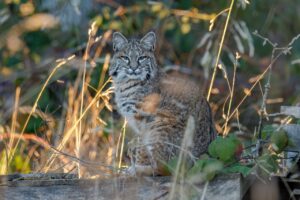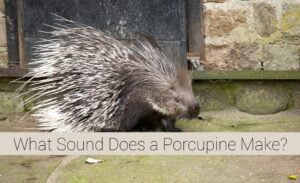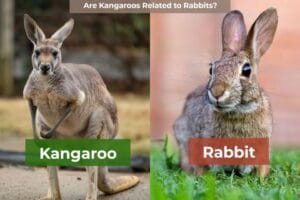Not all animals possess the same level of intelligence; while some animals can learn and display some level of intelligence, others are not very bright.
In this article, we will cover the top 15 animals with the lowest IQ. You will also learn why these animals have a low IQ and how they survive on their own.
What is Animal IQ?
Before we jump into our list, let us understand how animal IQ is measured. Since animals can not exhibit the same level of intelligence as humans, scientists assess their cognitive abilities based on problem-solving skills, learning capacity, and adaptability.
Although the term “IQ” might not be entirely accurate, it gives us an idea of how different species compare.
The Top 15 Animals with the Lowest IQ
1. Turkey

Genus: Meleagris
Scientific Name: Meleagris gallopavo
The first animal on our list is turkeys. Native to North America, these birds are found in almost all parts of the world.
Turkeys are known for their low animal intelligence and tendency to panic at the slightest disturbance, especially domesticated turkeys.
When writing a list like this, turkeys will always be at the top, mainly because of their behaviour. If you have been to a farm where turkeys are reared, you will start to believe they are the dumbest birds.
For starters, they have an almost clumsy-like walk and can stare into the sky for up to 30 minutes at a time.
Wild turkeys that are found in forests are more intelligent than domestic ones. This is because they need to be quick to respond to threats in the wild.
Have you ever been chased by a turkey? I know I have been chased on several occasions. Turkeys tend to chase people for different reasons, like territoriality, a lack of fear, or mistaken identity due to their relatively poor close-up eyesight.
There is a myth that wild turkeys have been known to drown in the rain because they look up with their mouths open.
Although this is exaggerated because turkeys might not drown from the rain, they have a genetic condition called tetanic torticollar spasms which cause them to look upward involuntarily.
2. Koala

Scientific Name: Phascolarctos cinereus
Koalas are one of the most favourite animals for visitors in Australia. They are known to have small brains relative to their body size, sometimes arguably the smallest brains of all known mammals.
Koalas, also sometimes called the koala bear, struggle with basic problem-solving and adaptability. They received the title of the dumbest animals because of eucalyptus leaves, their primary source of food.
Did I also mention that koalas sleep up to 18 to 22 hours a day because of their low-energy diet of eucalyptus leaves? These adorable animals can have a hard time adapting to new environments and can be quite clumsy.
3. Sloth

Suborder: Folivora
Sloths are another animal placed in the same category with the least intelligent animals. They are known for their slow movements and low-energy lifestyle.
There are two types of sloths, two- and three-toed sloths. Native to South and Central America, where they live in trees of the tropical rainforests.
If you remember the “Ice Age” movies, then you will know Sid the Sloth, a character in the movie. Sid is known as a lazy, simple-minded character.
Due to their low intelligence and slow movement, sloths sleep almost throughout the day, have poor eyesight, and occasionally mistake their limbs for tree branches.
Since sloths have very slow movement, green algae grow on their fur. The green algae helps them camouflage perfectly in their dense forest habitat.
4. Panda

Scientific Name: Ailuropoda melanoleuca
The Panda also known as the giant panda or panda bear, is a clumsy bear species native to China.
Although they are cute animals, they are widely known for being clumsy, falling around or tripping. Pandas spend most of their time eating and sleeping.
A panda primarily feeds on bamboo, and it can eat for up to 16 hours a day.
In captivity, pandas are assisted with minor tasks to ensure their survival. Especially in giving birth and raising cubs.
5. Flamingo

Scientific Name: Phoenicopteridae
Flamingos are adorable birds with unique pink feathers. These birds are known for their ability to stand on one leg even when eating.
Looking at a picture of a flamingo, you might think they are standing on one leg for a reason, but people are still puzzled by this behaviour.
Like many other birds on this list, Flamingos have small brains and have to rely on instinctual behaviour. They tend to follow the crowd without thinking individually.
6. Jellyfish

The jellyfish are sea creatures that float around the ocean with their trailing tentacles. This aquatic animal has no brain, heart or bones.
Some jellyfishes are transparent, so you can see through them. Since jellyfish do not have a brain, they rely on a simple nerve net that allows them to react to stimuli.
How do they survive in the water? They depend on their venomous tentacles that automatically sting anything that comes into contact.
You can say their everyday life is driven by instincts rather than intelligence.
7. Ostrich

Genus: Struthio
This list would not be complete without mentioning Ostriches. These flightless birds are the largest birds in the world, standing at 9 feet tall and weighing up to over 300 pounds.
An Ostrich has the ability to run at speeds of up to 70 km/h, faster than some predators. Combined with their clawed foot, which can deliver deadly kicks to large animals like lions.
Even with all these advantages, when faced with a threat, ostriches sometimes choose to drop to the ground, lie flat and stretch their necks out to blend in with the terrain. To them, this makes them appear invisible.
Do you know that the brain of an ostrich is smaller than one of its eyes? Although they have small brains, they have to rely on vision for survival.
An ostrich can see predators from kilometres away; most of the time they might run or kick, but occasionally they choose to go invisible by trying to blend with the surroundings.
The legend that says ostriches bury their heads in the sand when faced with a threat is actually a myth rather than a fact. They do not bury their head under the sand but instead stretch their neck to try and blend with the sand.
8. Kakapo

Scientific Name: Strigops habroptilus
Kakapos, also known as owl parrots or owl-faced parrots, are flightless parrots native to New Zealand. These critically endangered nocturnal birds lack intelligence.
Kakapos have a limited ability to learn and adapt, which places them on this list of animals with the lowest IQ.
In the wild, kapapos have no survival skills when faced with a threat like a predator. They often freeze in place when threatened, a defence which is leading the species to extinction.
Kakapos are also known to be clumsy and have strange behaviours. For instance, these are videos of kakapos trying to mate with human heads. Some are even seen wandering directly into danger.
As of 2024, there are only 244 kakapos living in the wild.
9. Jerboa

Family: Dipodidae
Jerboas are hopping desert rodents found throughout North Africa and Asia. They tend to live in hot deserts and, like many other animals, do not know how to survive.
Jerboas are known to hop in zigzag or unpredictable patterns; this feature helps them evade predators in the wild.
These little rodents find it difficult performing basic tasks like finding food. In captivity, they also appear nervous or disoriented.
10. Slow Loris

Genus: Nycticebus
The Slow Loris is another candidate on the list of the dumbest animals. They are known to be sluggish, just like sloths.
Slow lorises are nocturnal primates found in Southeast Asia in places like Bangladesh, India, China, and the Philippines.
When in a life-threatening situation, slow lorises choose to remain motionless and rely on camouflage to survive. Its slow movement also contributes to this decision and quiet life in the trees.
11. Komodo Dragon

Scientific Name: Varanus komodoensis
Komodo Dragons or Komodo monitors, are large lizards found in Indonesia. They have huge jaws, and the worst part is their bite.
The level of E Coli and other bacteria in their mouth is enough to kill larger animals with a single bite. Basically, they bite and then follow the animal around until it gives up.
Komodo Dragons are viewed as unintelligent or dumb because of their lack of learning capacity and limited cognitive adaptability. Although they have good hunting and survival skills, they are still placed in the same category with the least brightest animals.
12. Norwegian Lemming

Scientific Name: Lemmus lemmus
Norwegian lemmings, also known as Norway lemmings, are small rodents found in northern Fennoscandia.
These small creatures are known to be as dumb as putting up a fight with larger animals. With a small size of 6.1 inches, they challenge animals like cats, birds of prey, and bullmastiffs.
Norwegian lemmings will become aggressive and use their strong teeth to bite predators instead of running away like other rodents.
13. Cane Toad

Scientific Name: Rhinella marina
Cane toads, or marine toads, are large toads native to South and mainland Central America. They earned the title of largest toads due to their massive size.
These amphibians are not the brightest due to some of their behaviours, like eating nearly anything they find in the wild, including insects, deceased animals, toxic substances and even human waste.
Cane toads have poison glands that make them dangerous to both wild and domesticated animals, particularly dogs. Their skin is toxic and can kill many animals that try to ingest them. Even their tadpoles are highly toxic to most animals if ingested.
Just like many other animals on this list, cane toads choose to stand still and let their toxin kill or repel the attacker. This strategy always fails most of the time.
14. Goblin Shark

Scientific Name: Mitsukurina owstoni
Although sharks are known to be the least intelligent of shark species. Found in the deep waters, the goblin shark has an extendable jaw and poor eyesight.
These features make them poor swimmers and sluggish. But they use the dark ocean depth as their advantage.
Although they are lazy, they feed by extending their jaws to snatch nearby prey like squids, molluscs, crabs, or other fish without lifting a muscle.
15. Killdeer

Scientific Name: Charadrius vociferus
The Killdeer is not a deer but a bird found in North and South America. These birds are terrific actors, and they deserve an award for their performance.
When faced with a threat, killdeers pretend to have a broken wing by flapping awkwardly on the ground and making loud distress calls. A behaviour that they use to lure predators away from their ground nests.
Yes, they build their nests on the ground, which makes them easily accessible to predators.
Other Animals You Might Consider Dumb
Northern Fulmar Chick
Scientific Name: Fulmarus glacialis
Northern Fulmar chicks are also known as Arctic Fulmars. They have a defence mechanism that allows them to vomit a foul-smelling, sticky orange oil on to predators.
Fulmar chicks do this to deter predators like gulls or raptors. The oily vomit sticks to the body of the predator and hardly comes off. For birds, they are unable to fly since their feathers are sticky.
Horned Lizard

Genus: Phrynosoma
Horned Lizards are North American lizards that have tiny horns poking out of their bodies.
When threatened, they remain motionless to avoid detection. Most of the time, they shoot blood from their eyes to prey up to 5 ft away.
They have evolved this defence mechanism since they choose not to run away from threats due to sluggish behaviour.
Sea Sponges
Scientific Name: Porifera
Sea sponges are some of the simplest sea creatures. They have no brain, nervous system, or organs and stay attached to the seabed.
They feed by relying on a system of pores and channels to filter water and extract nutrients.
Conclusion
Many animals have different behaviours, some of which are considered unintelligent. These animals do not reason like humans and other smart animals like orangutans, chimpanzees or even gorillas.
In this article, we have shared the top 15 animals with the lowest IQ and have also included some other animals that fit this category.
While these animals might not be the brightest, they each have unique adaptations that help them survive in their environments.
FAQs
Are sloths as intelligent as primates?
No, sloths are not as intelligent as primates. Primates are known to be able to understand each other and even build tools, while sloths do not even come close to any of these abilities.
What animal has the lowest IQ?
Ostriches have limited problem-solving capabilities and learning capacity, even with their large size, speed, and strong feet.
Jellyfish and sea sponges are widely considered the animals with the lowest IQ due to their lack of brains and simple nervous systems.
Are pandas really that unintelligent?
Pandas have specialised adaptations for their bamboo diet, which limit their cognitive abilities. However, they exhibit strong social bonds and emotional intelligence.
Why do turkeys look up in the rain?
Turkeys sometimes look up in the rain out of curiosity, but the myth that they drown this way is largely exaggerated.

Hi, I’m Louis Ojibe, and I grew up around wildlife in Africa. I have always been fascinated by animals and nature across the world.
As a child, my parents used to take me to see wild animals like lions, elephants, gorillas, tortoises, and many others at our local zoo.












